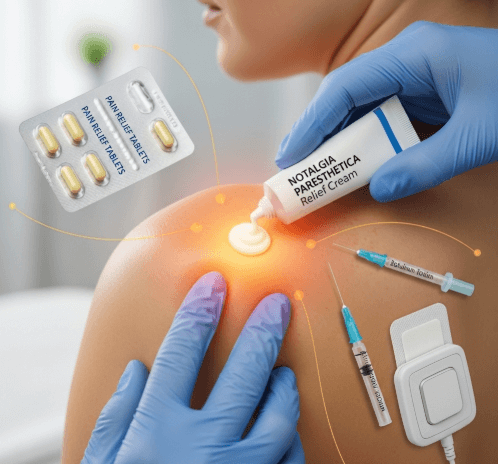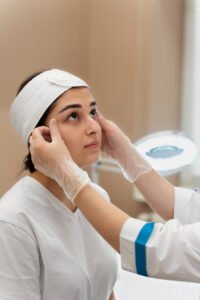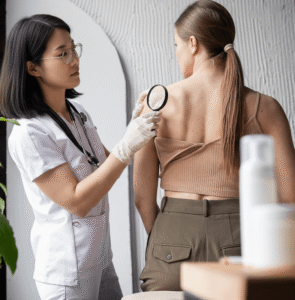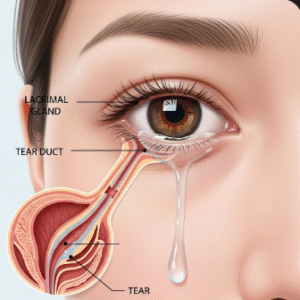What it is
➝ Notalgia paresthetica (NP) is a chronic, sensory neuropathy that presents as localized itching, tingling, or burning on the upper back, usually between the shoulder blades.
➝ It is believed to result from nerve entrapment or irritation of the dorsal spinal nerves (T2–T6), often associated with degenerative spinal changes, posture problems, or trauma.
➝ The condition is benign but causes persistent, sometimes severe itch and can lead to secondary skin changes (hyperpigmentation, lichenification) from chronic scratching.
➝ In Korea, treatment strategies focus on itch relief, nerve modulation, physical therapy, and cosmetic care for skin changes.
Why it’s done
→ To relieve chronic localized itch and burning, which can be disabling.
→ To prevent skin thickening, excoriations, and pigmentary changes from scratching.
→ To improve quality of life and sleep, often disrupted by neuropathic itch.
→ To address underlying spinal or musculoskeletal issues contributing to nerve irritation.
Alternatives / Treatment Options
Topical therapies
→ Capsaicin cream or patches: desensitizes cutaneous nerves by depleting substance P.
→ Topical anesthetics (lidocaine patches, pramoxine creams).
→ Topical corticosteroids: useful only if secondary eczema develops.
→ In Korea, compounded creams with lidocaine and capsaicin are sometimes prepared in specialty pharmacies.
Systemic therapies
→ Gabapentin or pregabalin: first-line for neuropathic itch.
→ Amitriptyline or mirtazapine: can help itch, especially with sleep disturbance.
→ Antihistamines: limited effect (since NP is not histamine-driven) but used for nighttime sedation.
Procedural options
→ Botulinum toxin injections: reduce neuropathic signaling; used in some Korean clinics for refractory NP.
→ Intradermal steroid or lidocaine injections: for short-term relief.
→ Laser therapy (fractional CO₂ or Nd:YAG): reduces pigmentation and nerve sensitivity in affected skin.
Physical therapy / spine care
→ Stretching, posture correction, and strengthening of paraspinal muscles.
→ Manual therapy or chiropractic adjustments when spinal nerve compression contributes.
→ In Korea, many patients undergo rehabilitation medicine or physiotherapy alongside dermatology treatment.
Adjuncts
→ Cooling devices, hydrogel patches, or anti-itch sprays.
→ Cosmetic treatments (chemical peels, laser toning) for residual hyperpigmentation.
Preparation
→ Clinical diagnosis based on history of localized itch in paraspinal region without primary rash.
→ Rule out other causes of itch (eczema, fungal infection, psoriasis).
→ Spinal imaging (X-ray or MRI) may be done if degenerative spine disease is suspected.
→ In Korea, dermatologists often collaborate with neurology or rehabilitation specialists for comprehensive evaluation.
How it’s Done
→ Step 1: Begin with topical capsaicin or lidocaine and moisturizers to reduce itch.
→ Step 2: Add neuropathic agents (gabapentin, pregabalin) if symptoms persist.
→ Step 3: For refractory cases, consider botulinum toxin injections, laser therapy, or spinal physiotherapy.
→ Step 4: Address cosmetic hyperpigmentation with laser toning or topical lightening creams once itch is controlled.
Recovery
→ Most patients experience partial relief within 2–4 weeks of therapy.
→ Capsaicin can cause initial burning but improves symptoms with consistent use.
→ Systemic neuropathic medications often reduce itch by 50–70%.
→ Long-term relief is possible if underlying spinal or postural issues are corrected.
Complications
→ Persistent itch despite therapy (NP is often chronic and relapsing).
→ Secondary lichenification, excoriations, or post-inflammatory pigmentation.
→ Side effects of medications: sedation with gabapentin, mood changes with antidepressants.
→ Local irritation from capsaicin or lidocaine if overused.
Treatment Options in Korea
→ Korean dermatology clinics frequently use laser therapy plus topical neuropathic creams for NP.
→ Multidisciplinary care is common: rehabilitation medicine addresses posture and spine issues, while dermatology treats itch and pigmentation.
→ Advanced clinics offer botulinum toxin injections for resistant cases.
→ Korean patients often use K-beauty cosmeceuticals with cooling, soothing, and pigmentation-reducing ingredients as adjunctive care.













